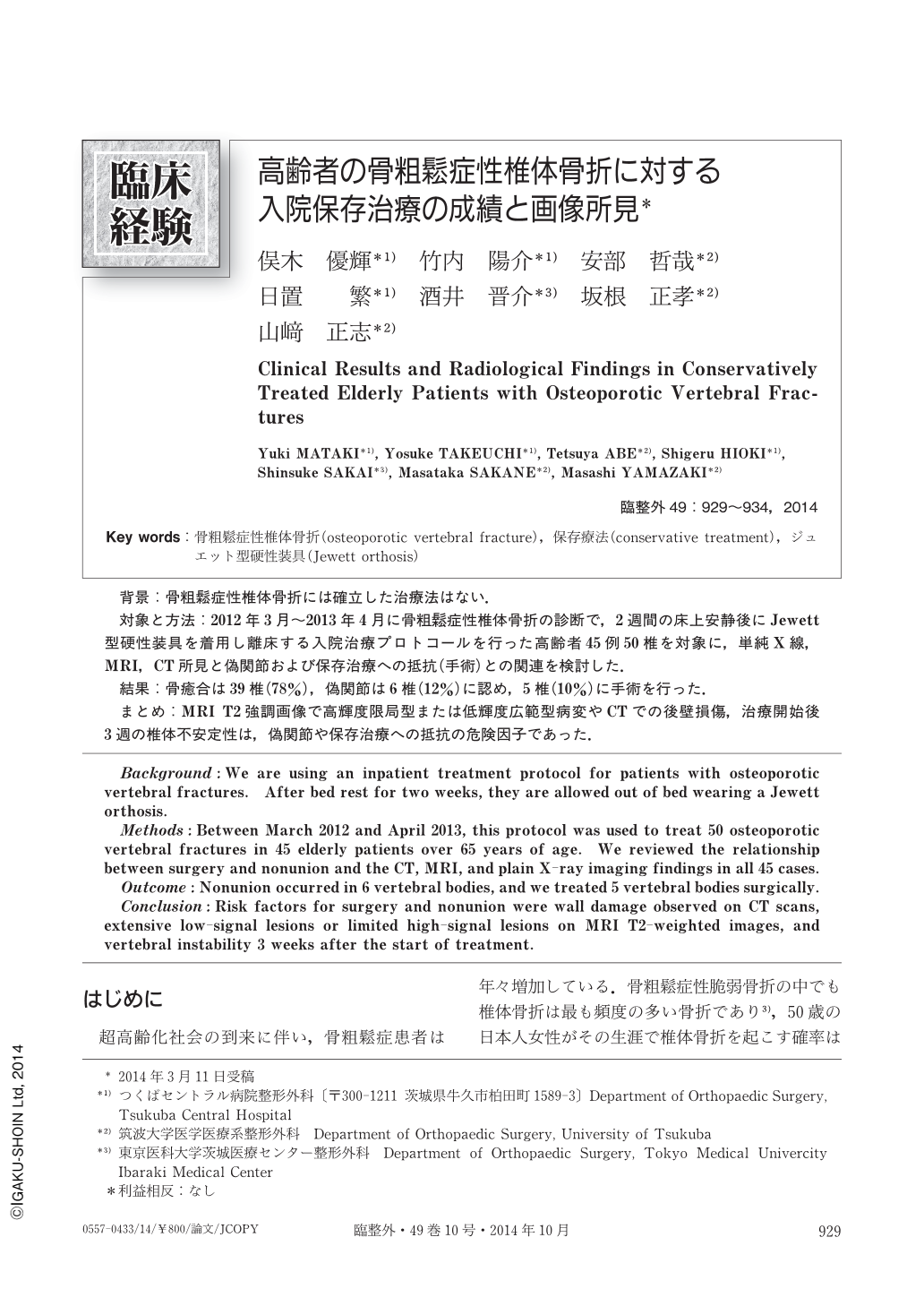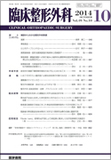Japanese
English
- 有料閲覧
- Abstract 文献概要
- 1ページ目 Look Inside
- 参考文献 Reference
背景:骨粗鬆症性椎体骨折には確立した治療法はない.
対象と方法:2012年3月〜2013年4月に骨粗鬆症性椎体骨折の診断で,2週間の床上安静後にJewett型硬性装具を着用し離床する入院治療プロトコールを行った高齢者45例50椎を対象に,単純X線,MRI,CT所見と偽関節および保存治療への抵抗(手術)との関連を検討した.
結果:骨癒合は39椎(78%),偽関節は6椎(12%)に認め,5椎(10%)に手術を行った.
まとめ:MRI T2強調画像で高輝度限局型または低輝度広範型病変やCTでの後壁損傷,治療開始後3週の椎体不安定性は,偽関節や保存治療への抵抗の危険因子であった.
Background:We are using an inpatient treatment protocol for patients with osteoporotic vertebral fractures. After bed rest for two weeks, they are allowed out of bed wearing a Jewett orthosis.
Methods:Between March 2012 and April 2013, this protocol was used to treat 50 osteoporotic vertebral fractures in 45 elderly patients over 65 years of age. We reviewed the relationship between surgery and nonunion and the CT, MRI, and plain X-ray imaging findings in all 45 cases.
Outcome:Nonunion occurred in 6 vertebral bodies, and we treated 5 vertebral bodies surgically.
Conclusion:Risk factors for surgery and nonunion were wall damage observed on CT scans, extensive low-signal lesions or limited high-signal lesions on MRI T2-weighted images, and vertebral instability 3 weeks after the start of treatment.

Copyright © 2014, Igaku-Shoin Ltd. All rights reserved.


